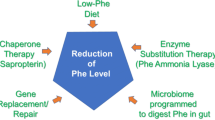Background:
We hypothesized that mutation of the pancreatic secretory trypsin inhibitor (PSTI) gene may promote a predisposition to pancreatitis, possibly by reducing the inhibition of trypsin activity. Based on this hypothesis, we performed a biochemical analysis of recombinant PSTI protein. Methods: The trypsin inhibitory activity of the recombinant protein was analyzed. The activity of PSTI protein with a point mutation of the most common type: 34Asn (AAT)-to-Ser (AGT)(101A>G N34S: N34S) in exon 3, was compared with that of the wild type. Results: The function of N34S PSTI remained unchanged under both the usual alkaline and acidic conditions compared with the wild-type PSTI. The calcium concentration did not affect the activity of recombinant PSTI. The trypsin susceptibility of the N34S protein was not increased either. Conclusions: Mechanisms other than the conformational change of PSTI associated with amino-acid substitution, such as abnormal splicing, may underlie the predisposition to pancretitis in patients with the N34S mutation.
Similar content being viewed by others
Author information
Authors and Affiliations
Additional information
Received: January 10, 2002 / Accepted: May 17, 2002
Reprint requests to: M. Ogawa
Rights and permissions
About this article
Cite this article
Kuwata, K., Hirota, M., Shimizu, H. et al. Functional analysis of recombinant pancreatic secretory trypsin inhibitor protein with amino-acid substitution. J Gastroenterol 37, 928–934 (2002). https://doi.org/10.1007/s005350200156
Issue Date:
DOI: https://doi.org/10.1007/s005350200156




